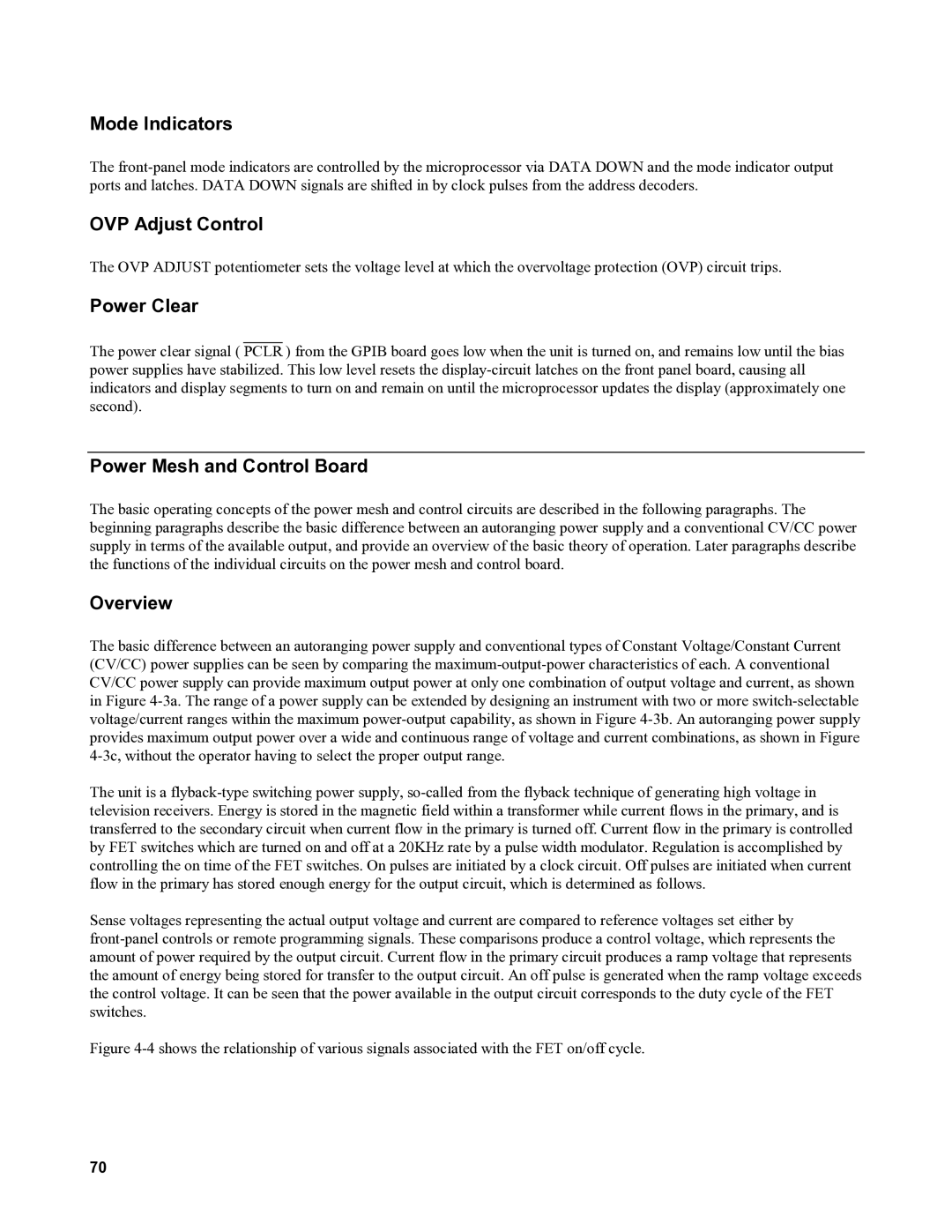Mode Indicators
The front-panel mode indicators are controlled by the microprocessor via DATA DOWN and the mode indicator output ports and latches. DATA DOWN signals are shifted in by clock pulses from the address decoders.
OVP Adjust Control
The OVP ADJUST potentiometer sets the voltage level at which the overvoltage protection (OVP) circuit trips.
Power Clear
The power clear signal ( PCLR ) from the GPIB board goes low when the unit is turned on, and remains low until the bias power supplies have stabilized. This low level resets the display-circuit latches on the front panel board, causing all indicators and display segments to turn on and remain on until the microprocessor updates the display (approximately one second).
Power Mesh and Control Board
The basic operating concepts of the power mesh and control circuits are described in the following paragraphs. The beginning paragraphs describe the basic difference between an autoranging power supply and a conventional CV/CC power supply in terms of the available output, and provide an overview of the basic theory of operation. Later paragraphs describe the functions of the individual circuits on the power mesh and control board.
Overview
The basic difference between an autoranging power supply and conventional types of Constant Voltage/Constant Current (CV/CC) power supplies can be seen by comparing the maximum-output-power characteristics of each. A conventional CV/CC power supply can provide maximum output power at only one combination of output voltage and current, as shown in Figure 4-3a. The range of a power supply can be extended by designing an instrument with two or more switch-selectable voltage/current ranges within the maximum power-output capability, as shown in Figure 4-3b. An autoranging power supply provides maximum output power over a wide and continuous range of voltage and current combinations, as shown in Figure 4-3c, without the operator having to select the proper output range.
The unit is a flyback-type switching power supply, so-called from the flyback technique of generating high voltage in television receivers. Energy is stored in the magnetic field within a transformer while current flows in the primary, and is transferred to the secondary circuit when current flow in the primary is turned off. Current flow in the primary is controlled by FET switches which are turned on and off at a 20KHz rate by a pulse width modulator. Regulation is accomplished by controlling the on time of the FET switches. On pulses are initiated by a clock circuit. Off pulses are initiated when current flow in the primary has stored enough energy for the output circuit, which is determined as follows.
Sense voltages representing the actual output voltage and current are compared to reference voltages set either by front-panel controls or remote programming signals. These comparisons produce a control voltage, which represents the amount of power required by the output circuit. Current flow in the primary circuit produces a ramp voltage that represents the amount of energy being stored for transfer to the output circuit. An off pulse is generated when the ramp voltage exceeds the control voltage. It can be seen that the power available in the output circuit corresponds to the duty cycle of the FET switches.
Figure 4-4 shows the relationship of various signals associated with the FET on/off cycle.

